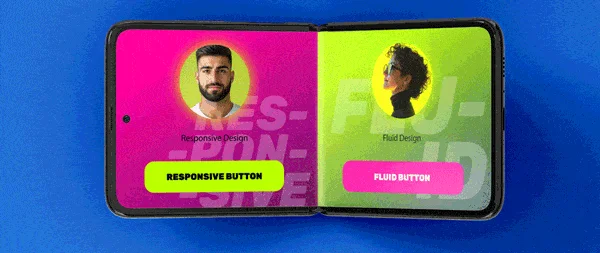
Introduction
For years, responsive web design (RWD) has been the gold standard for creating websites that adapt to different screen sizes. However, with the increasing diversity of devices, from smartphones to ultra-wide monitors and foldable screens, traditional responsive design has reached its limits. Fluid layouts are now emerging as the superior solution, offering greater flexibility, adaptability, and user experience consistency. This guide explores why fluid layouts are replacing responsive design and how you can implement them effectively.
The Problem with Traditional Responsive Web Design
1. Breakpoint Limitations
Responsive design relies on media queries to define breakpoints for different screen sizes. However, with countless devices and resolutions, defining static breakpoints is no longer practical.
2. Over-Reliance on Fixed Layouts
Many responsive designs still use fixed-width containers, leading to inconsistent experiences on screens that fall between predefined sizes.
3. Poor Adaptability for Emerging Devices
With the rise of foldable devices, ultra-wide monitors, and wearables, responsive layouts often fail to provide a seamless experience across all screens.
Why Fluid Layouts Are the Future
1. True Adaptability
Unlike responsive design, which adjusts elements based on breakpoints, fluid layouts dynamically scale elements based on percentage-based widths, ensuring a smooth transition across any screen size.
2. Enhanced User Experience
Fluid layouts allow for seamless content scaling, eliminating awkward gaps or excessive white space found in traditional responsive designs.
3. Future-Proofing Against New Devices
With CSS Grid, Flexbox, and viewport units, fluid layouts can effortlessly accommodate new device types without the need for extensive redesigns.
How to Implement Fluid Layouts
1. Use Percentage-Based Widths
Instead of fixed pixel values, use percentages to allow elements to scale naturally:
.container {
width: 90%;
max-width: 1200px;
margin: 0 auto;
}
2. Embrace CSS Grid and Flexbox
Both CSS Grid and Flexbox provide powerful tools for creating adaptable, fluid layouts.
.grid-container {
display: grid;
grid-template-columns: repeat(auto-fit, minmax(200px, 1fr));
gap: 20px;
}
3. Utilize Viewport Units
Use vw (viewport width) and vh (viewport height) for fluid typography and spacing.
h1 {
font-size: 5vw;
}
4. Minimize Media Queries
While media queries can still be useful, fluid layouts reduce the need for excessive breakpoints, simplifying CSS maintenance.
Benefits of Fluid Layouts Over Responsive Design
| Feature | Responsive Design | Fluid Layout |
|---|---|---|
| Uses fixed breakpoints | Yes | No |
| Works across all devices | Limited | Fully adaptable |
| Future-proofing | Requires updates | Built for scalability |
| Design complexity | High | Lower |
Conclusion
While responsive web design was an important step in improving web accessibility, the future lies in fluid layouts. By embracing flexible grids, viewport-based units, and adaptive design principles, developers can create truly future-proof web experiences that work flawlessly on any device. As technology evolves, the shift toward fluid layouts will ensure a seamless and engaging user experience for all.
Table of Contents
📧 Stay Updated
Get the latest web development tips and insights delivered to your inbox.




